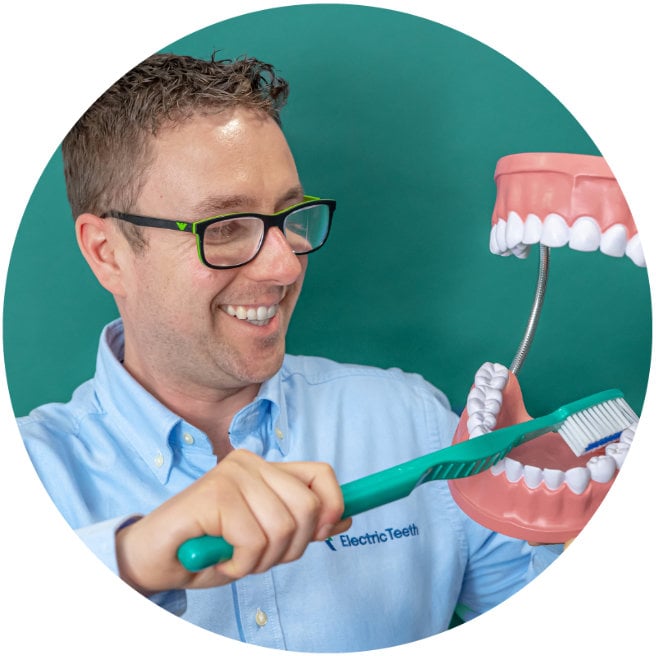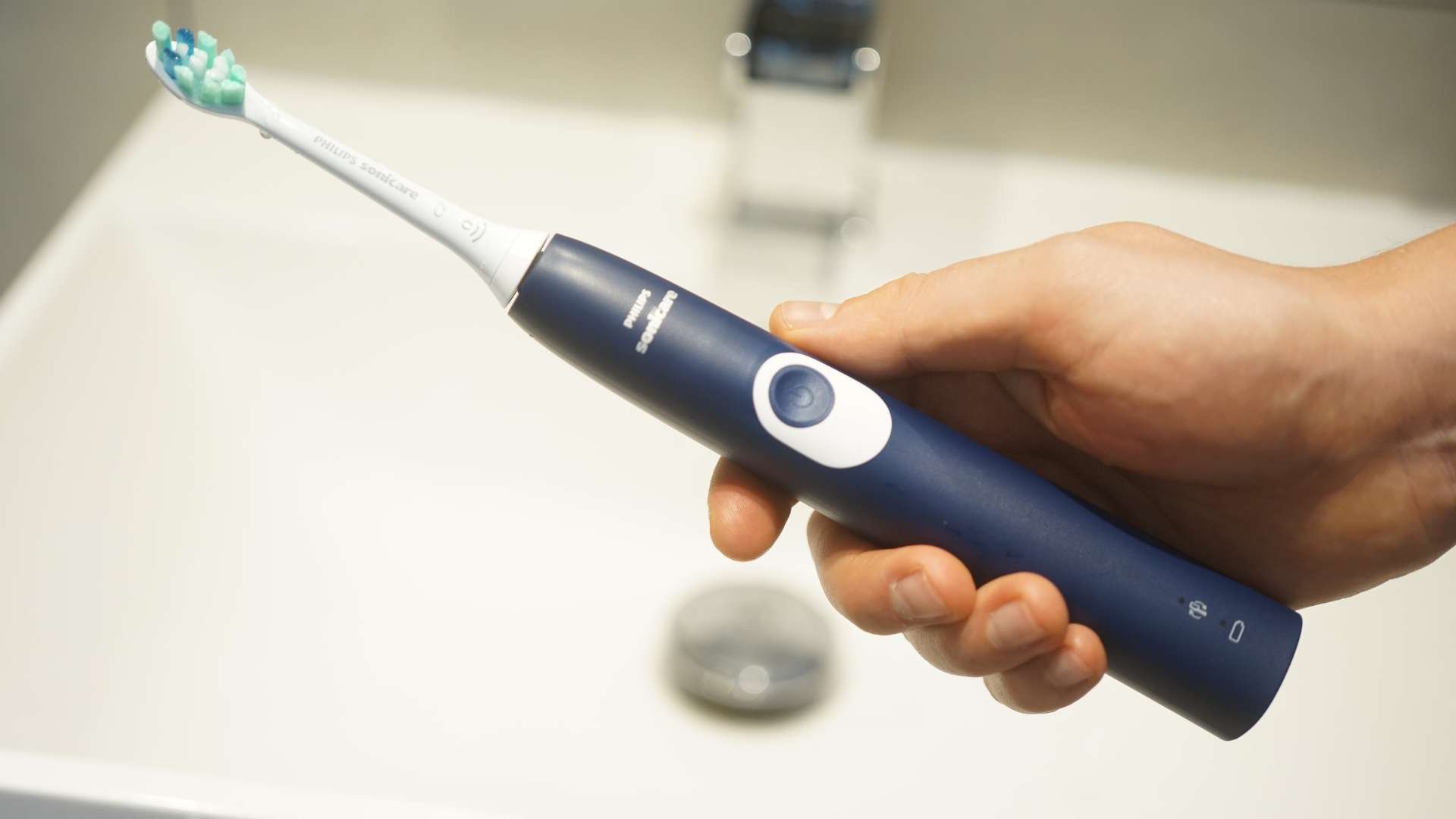
This video is of the UK version of the 4300. There are subtle differences, notably the handle colours, travel case, charging stand and price. But the general message is the same.
A fantastic electric toothbrush that you should just buy
The best overall choice in the Sonicare range of brushes, there is a lot to like about the 4300 ProtectiveClean.
Providing a great clean of the teeth, this simple to use brush comes with dentist recommended features.

2 intensity settings – choose between low & high power |
No icons to show which intensity is selected |

Reminds you when to replace your brush head |
|

Long battery life |

Not the cheapest, but fairly priced
$109 is the retail price of the 4300 ProtectiveClean.
It's a fair price given what is on offer, albeit a bit more expensive than some other options.
Expect to pay $90-100 as you can usually save $10-20.
Replacement heads cost $12 each. This makes the 3 year ownership cost around $222.
Given that our top recommended electric toothbrush, the Oral-B Pro 2000 costs $157, the 4300 appears expensive. This is because Sonicare heads are getting on for twice the price. You’re certainly not getting twice the cleaning results.
If you want a Sonicare brush, $30 can be saved by opting for the more affordable 2100 Series. It lacks a pressure sensor and the battery life is half that of the 4300. It’s not a big issue, but the motor is tuned differently. It doesn’t feel as intense. If you are on a budget it is our best budget Sonicare toothbrush. For the relatively small savings, I believe the 4300 is worth the premium.

A month's worth of battery life
A little over 5 weeks of usage time is achievable using the 4300. That’s over twice as long as claimed.
The rechargeable Lithium-Ion (Li-Ion) battery is sealed inside the handle. It surpassed my expectations and put this right up alongside the better performing brushes.
Long battery life isn’t essential, but certainly nice to have, particularly if more frequent recharging is inconvenient.
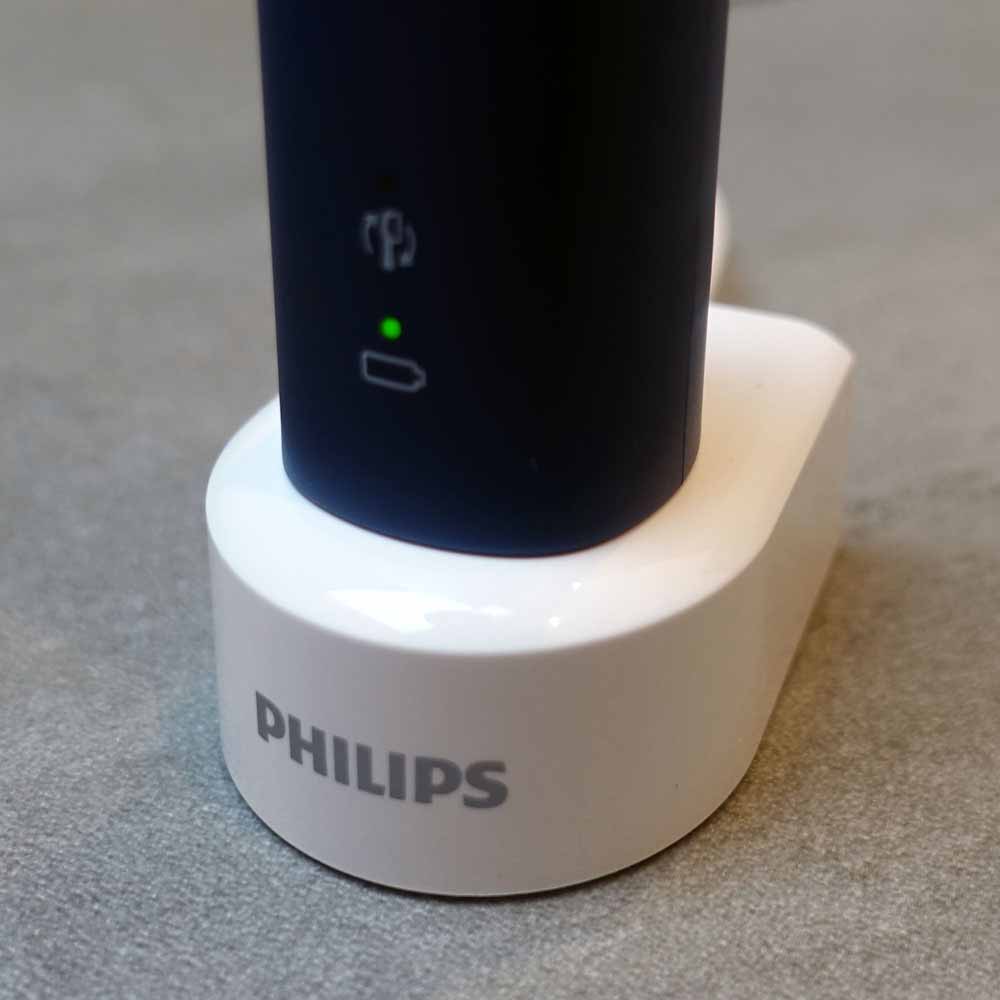
Battery charge feedback is provided via the colour changing and flashing LED on the handle. Surprisingly handy is the beep and vibration emitted when power is really low. It’s a subtle feature that makes daily use with a Sonicare brush stand out against the competition.
A 2 pin charging stand is included. The protuberance on the top fits into the base of the handle and takes up to 24 hours to replenish it fully. Supporting 100-240v you will need a plug adapter if you want to use the stand internationally.
The essential, dentist recommended features
Our in-house dentists like to see 3 key features in an electric toothbrush. A 2 minute timer, a pacer and a pressure sensor. The 4300 has them all.
You can switch between 2 brushing intensities
It’s easier to get brushing with the ProtectiveClean as you have less choice of modes. It has 1 cleaning mode, with the choice of a high or low intensity.
Pressing the power button switches between these. You don’t have any model labels on the handle to show which is active. It is easy to tell the difference between them based on the brushing sensation and sound.
The high mode is my preference as it delivers the most satisfying clean. This is the mode you want to use most of the time.
Low is ideal if your gums feel a bit tender or inflamed. It’s arguably a sensitive mode and does make a good choice for new electric brush users.
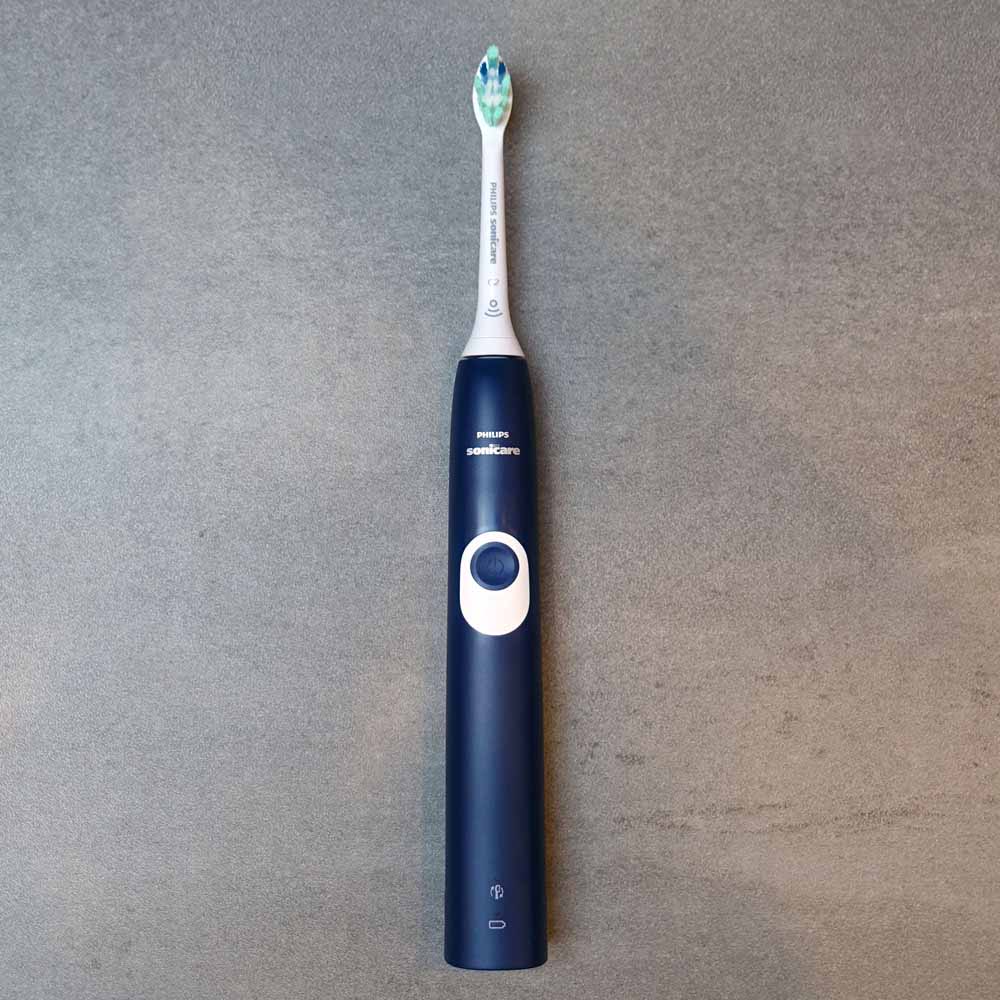
The 2 minute timer and pacer encourage even brushing of your teeth
Too few people brush for the recommended amount of time. Having a timer built into a brush helps encourage us to clean for longer. The 4300’s timer is well thought out. This is because it powers off the brush automatically, once 2 minutes have passed. If you turn the brush off manually, you know you haven’t brushed for long enough.
Brushing for the right duration is one thing, but another is to give all your teeth fairly equal attention. You need to brush the inner, outer and biting surfaces of the teeth. Failing to do so can lead to problems long term.
To help with this the 4300 has a pacer built in. At 30 second intervals, the timer pauses the bristle motion. It creates a change in the sound and brushing sensation. This is your cue to move between the 4 sections of the mouth until all have been brushed.
The pressure sensor helps to stop you from brushing too hard
Too much pressure can cause wear on the teeth and gums. Long term, this can result in irreversible damage. The 4300’s built-in pressure sensor can help you if you know you brush too hard.
The handle vibration pattern changes if it detects too much force. At the same time, the brushing sensation and sound alter.
Once pressure is relieved the sound changes and the vibration pattern stops. You’ll soon learn what’s too much. But like me, you will still activate the sensor from time to time. Don’t panic. The aim is to prevent frequent forceful brushing.
Unlike Oral-B brushes that often have a large visible LED to alert you, the 4300 ProtectiveClean does not.
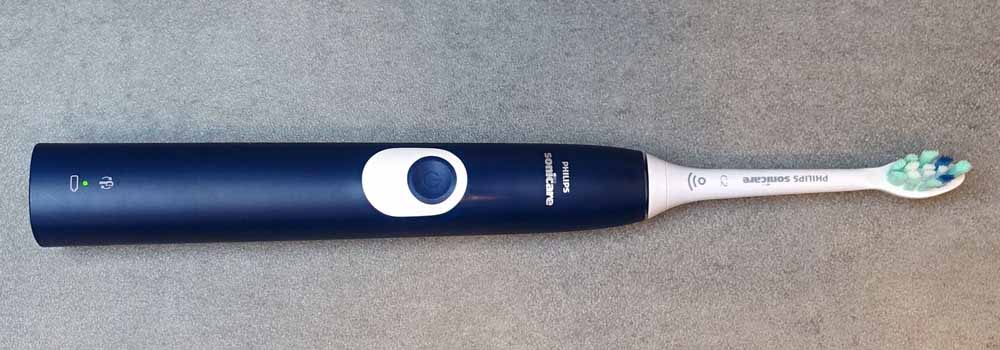
Cleaning results your dentist will be proud of
I want to get that ‘well done’ from the dentist each time I go for a checkup. It’s certainly possible when using the ProtectiveClean. The cleaning results are superb.
The sonic cleaning action causes rapid movement of the bristles which essentially tickle the gum and tooth surfaces. It can take some getting used to. It feels soft but effective too. The movements feel less harsh than a round Oral-B head.
62,000 bristles movements per minute are achieved on the high power intensity. This is the same number as premium models. The power and intensity feel stronger than the more affordable 2100 and 3100 Series brushes. Their motors are tuned differently.
Familiarise yourself with the correct way to brush your teeth. Using electric is different from a manual brush.
Sonic heads are similarly sized to most manual brushes, covering 2-3 teeth at a time. They don’t always suit smaller mouths. They can be harder to position in the tightest spaces. If you know you have a cramped mouth, Oral-B’s round brush heads might be better suited to you.
Philips offers a complicated range of interchangeable heads that fit the 4300. Just pull off the existing one and push on a new one. The C2 Optimal Plaque Defense is normally supplied and is our top pick as is a good all-round option. You don’t need heads specifically designed to whiten etc.
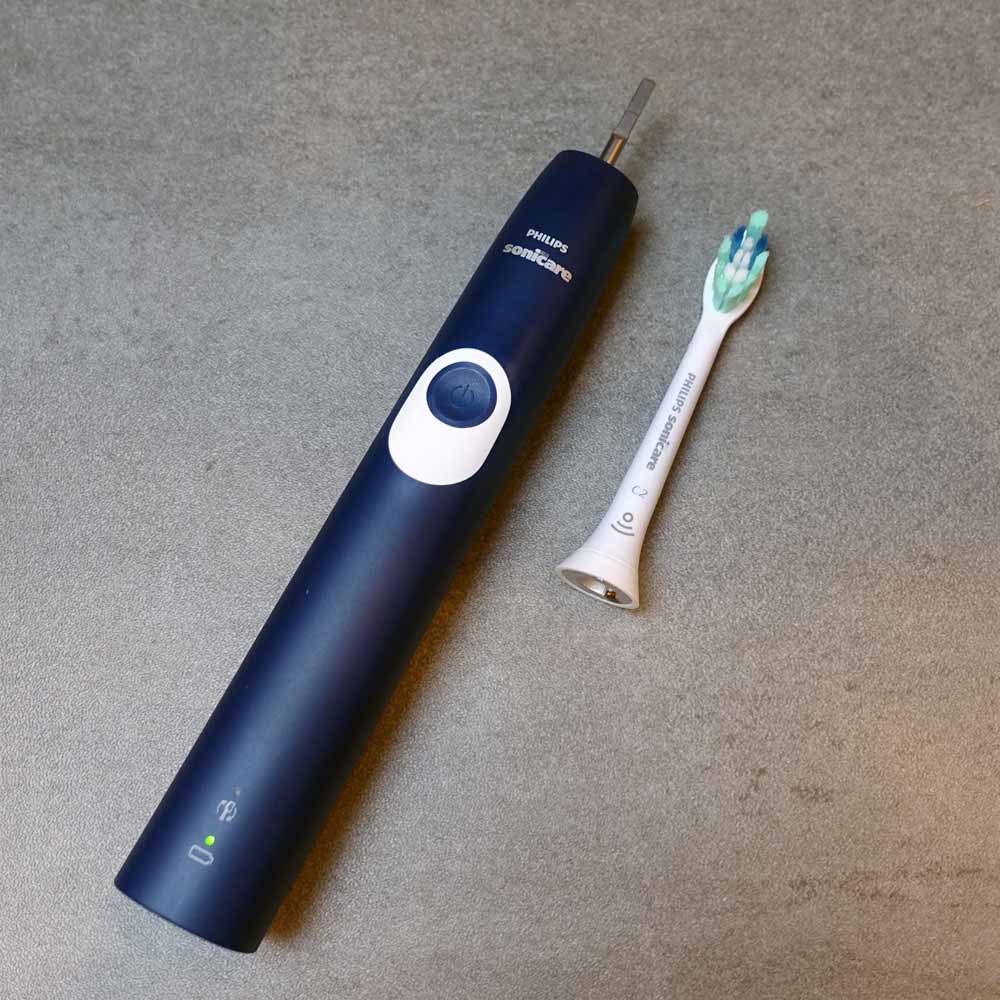
The minimal handle design looks good
Sonicare has set the standard for material quality and product design for some time. The 4300 continues this trend.
Durable and quality feeling in the hand
Design and how a product looks is personal opinion, but many agree that Philips make even their more affordable brushes look better.
The 4300 has a matt finish to the plastic handle that looks more premium, classy and refined than the glossier options from the competition.
The water resistant handle doesn’t have lots of textured surfaces. Yet, there is a resistive feeling when you move the fingertip down the smooth sides of the handle.
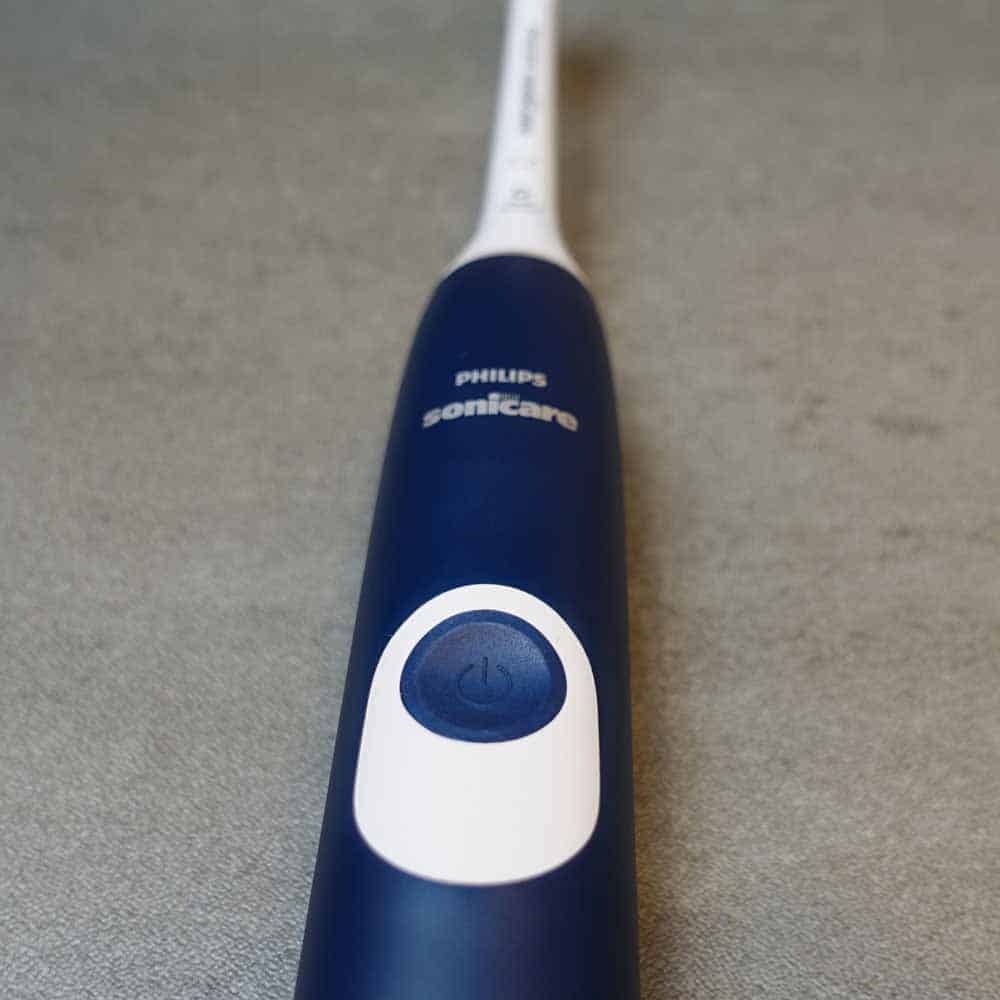
It isn’t awash with buttons and controls, it has a clean and minimal appearance which helps with keeping it clean.
Of about average size, it is a bit heavier than the likes of the 2100 Series.
Well balanced when rested in the palm, it feels reassuringly solid when you give it a firm squeeze. Construction seems top notch, I’ve no immediate concerns.
It stands upright on a countertop and strategically placed nodules on the rear of the handle help prevent it rolling when laid flat.
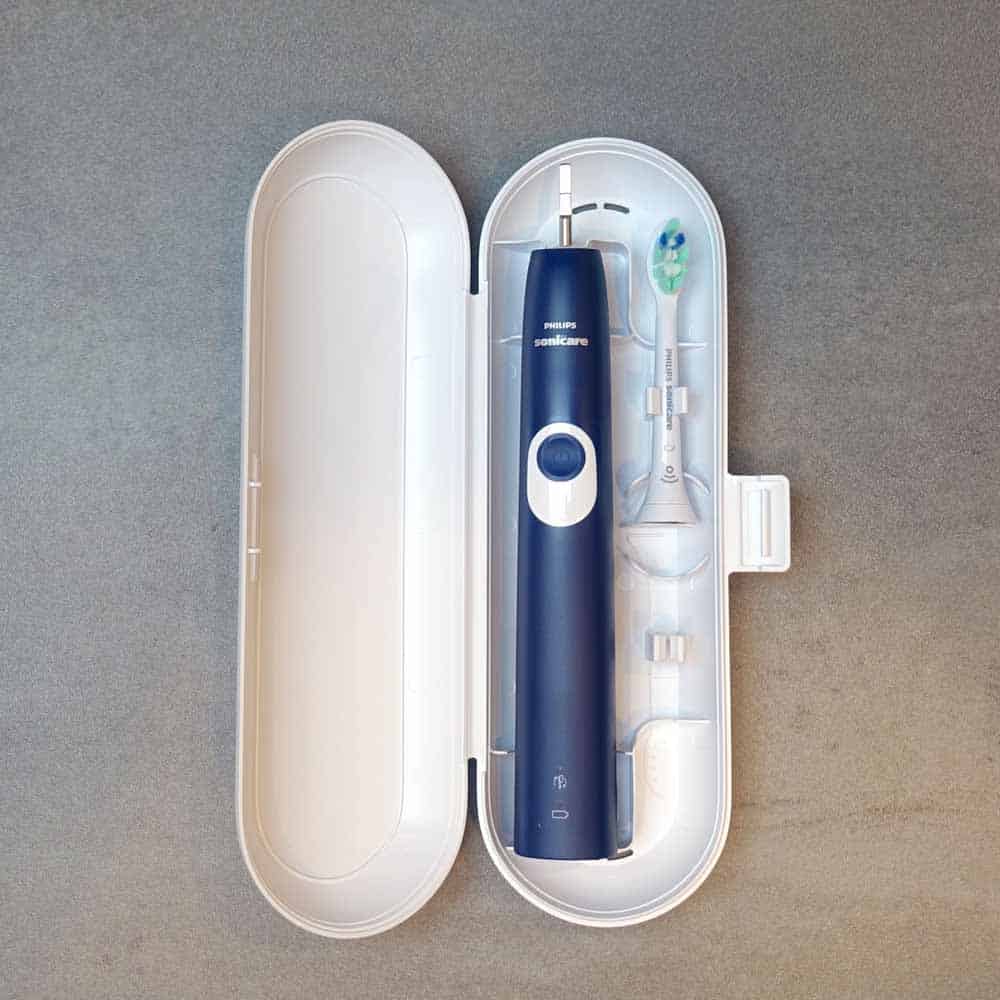
You’ll be reminded when you need a new brush head
Thanks to a Radio Frequency Identification (RFID) chip built into the base of the brush head, the 4300 can track your brush head usage.
Based on your brushing time, pressure, and frequency, it alerts you when the head requires replacement. You will see an amber light on the handle. You will still get the fading bristles in the head itself, which you might be familiar with.
The tech that makes this possible is called BrushSync. It is not an essential feature you need in a toothbrush. That said, if you know you often use a brush longer than the recommended 3 month period, it could be valuable to you.
Prolonged use of a head can mean worn bristles, and less effective, more abrasive brushing.
The vast majority of Sonicare heads are BrushSync enabled. It is possible to buy off brand heads and save money or pick up originals without the chip. Heads without the chip won’t be tracked.
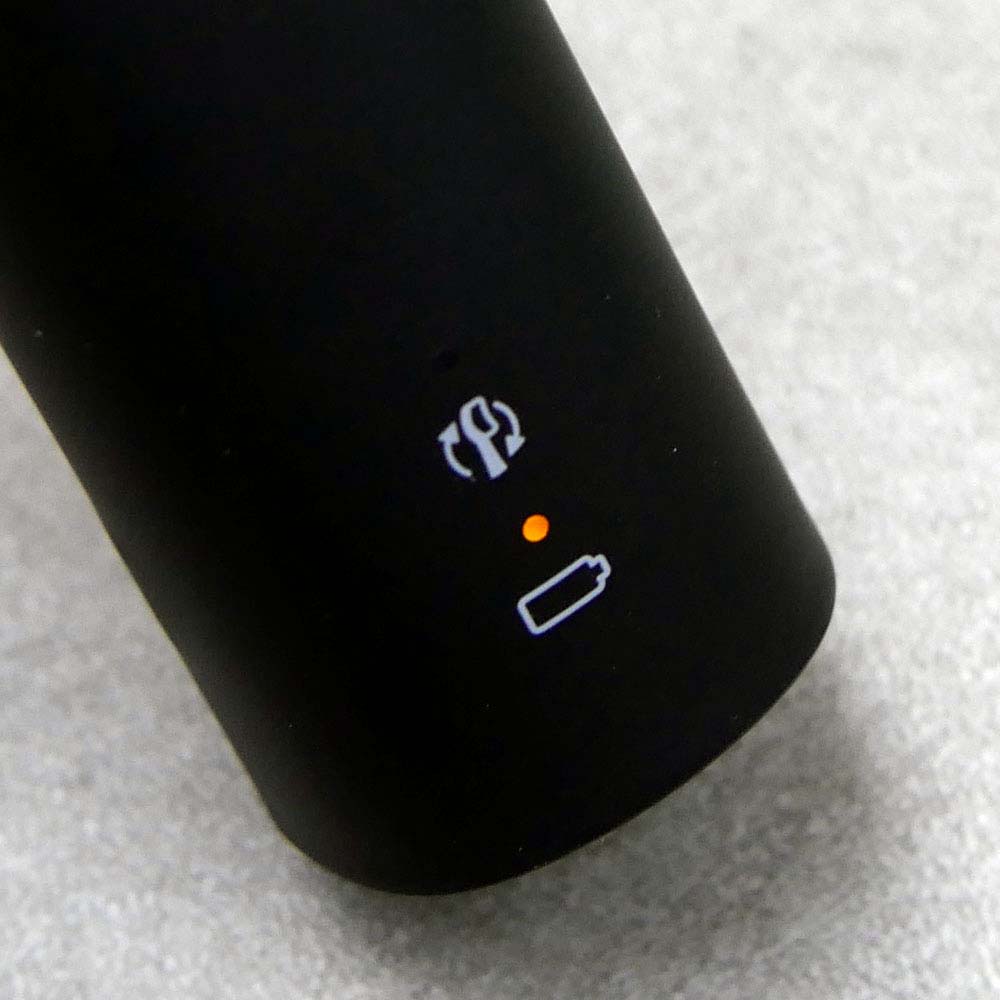
2 year warranty included as standard
An industry average 2 year warranty against defects and workmanship is provided.
Electric toothbrushes are not immune to failure, but in my experience reliability is good on the whole. Philips product quality is excellent and the 4300 gives no notable cause for concern.
Disappointingly, in an era where environmental impact is important, the 4300 has no serviceable parts. There is no ability to undertake a repair without rendering it useless.
Environmental impact
We don’t know the exact environmental impact of this particular model, but as a general rule the impact of electric toothbrushes is around 11 times more than a manual brush.
RFID-enabled brush heads further add to its planetary impact.
The brush heads are made of petroleum based plastic rather than more sustainable plant-based plastic.
Philips has partnered with schemes such as TerraCycle in some countries but doesn’t have its own scheme.
Conclusion: a brush you should buy
Great cleaning results, good battery life, timer, pacer and a pressure sensor - it ticks all the boxes.
It’s everything you could need and want from an electric toothbrush, hence it is our top overall recommended Sonicare toothbrush and one you should just buy.
Size guide
- Toothbrush height with head - 25cm / 9.8 inches
- Toothbrush height without head - 19cm / 7.5 inches
- Width - 2.8cm / 1.1 inches
- Depth/thickness - 3cm / 1.1 inches
- Weight with head - 130g / 4.6oz
- Weight without head - 125g/ 4.4oz
- Package weight - 282g / 10oz
Noise
- 60dB
Country of manufacture
- China
FAQ
How to turn on and off EasyStart
- Put the handle on the plugged-in charger.
- Press and hold the power on/off button while the handle remains on the charger.
- Keep the power on/off button pressed until you hear a single short beep (after 2 seconds).
- Release the power on/off button.
- Triple tone of low-med-high means the EasyStart feature has been activated.
- The brush head replacement light and battery light will also blink green 3 times in unison to confirm activation.
- -Triple tone of high-med-low means the EasyStart feature has been deactivated. The brush head replacement light and battery light will also blink amber 3 times in unison to confirm deactivation
How to turn on and off brush head reminder
- Put the handle on the plugged-in charger.
- Press and hold the power on/off button while the handle remains on the charger.
- Keep the power on/off button pressed until you hear a series of two short beeps (after 4-5 seconds).
- Release the power on/off button.
- Triple tone of low-med-high means the Brush head replacement reminder feature has been activated. The brush head replacement light and battery light will also blink green 3 times in unison to confirm activation.
- Triple tone of high-med-low means the Brush head replacement reminder feature has been deactivated. The brush head replacement light and battery light will also blink amber 3 times in unison to confirm deactivation.
How to turn on and off pressure sensor
- Put the handle on the plugged-in charger.
- Press and hold the power on/off button while the handle remains on the charger.
- Keep the power on/off button pressed until you hear a series of three short beeps (after 6-7 seconds).
- Release the power on/off button.
- Triple tone of low-med-high means the pressure sensor feature has been activated. The brush head replacement light and battery light will also blink green 3 times in unison to confirm activation.
- Triple tone of high-med-low means the pressure sensor feature has been deactivated. The brush head replacement light and battery light will also blink amber 3 times in unison to confirm deactivation.
- If you continue holding the power on/off button after the three short beeps, the activate/deactivate sequence repeats.





